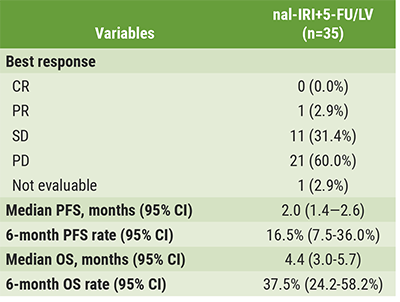Antiangiogenic agents, in particular monoclonal antibodies (mAbs) against vascular endothelial growth factor (VEGF), a major driver of tumour angiogenesis, are widely used in cancer therapy including mCRC. However, some patients do not profit from antiangiogenic treatments or develop resistance. So far, no biomarkers are available to predict resistance to antiangiogenic treatments. Prof. Thomas Seufferlein (University of Ulm, Germany) and co-workers hypothesised that repeated analysis of multiple cytokines related to angiogenesis together with machine learning approaches may enable an accurate prediction of anti-VEGF resistance during first-line treatment of mCRC patients with FOLFOX plus bevacizumab [1].
The PERMAD trial, a phase 1/2 biomarker trial (NCT02331927), aimed at establishing a cytokines and angiogenic factor (CAF) profile that enables the prediction of treatment resistance of patients with mCRC receiving bevacizumab plus mFOLFOX6 in a palliative first-line setting about 3 months prior to radiological progress, using an omics approach and bioinformatics. In total, 50 treatment-naïve mCRC patients were enrolled. Conventional switch of antiangiogenic agent and chemotherapy was carried out according to progressive disease (RECIST 1.1).
At baseline, 102 different, preselected CAFs were prospectively collected and centrally analysed in plasma samples (n=647) obtained prior to treatment and biweekly until radiological progress determined by CT scan every 2 months. The values of CAFs affected in a similar fashion by both chemotherapy and disease progress were excluded.
Change in CAF values/pattern correlated with subsequent progress 3 months prior to radiological progress according to RECIST 1.1. Using a random forest predictor, a CAF marker combination comprising 5 CAFs was established, whose specific change in value/pattern over time indicated treatment resistance 3 months prior to radiological progress. The model allowed to differentiate timepoints without progress from timepoints predicting progress 100 days before radiological progress with an accuracy of 83%, a sensitivity of 76%, and specificity of 88%.
In summary, using advanced bioinformatics, a CAF marker combination was identified that points out treatment resistance to FOLFOX plus bevacizumab in patients with mCRC, 3 months prior to radiological progress. Having an accurate assessment of resistance to antiangiogenic treatment may enable time to respond, by treating the patient with a more broadly acting antiangiogenic agent, thereby delaying resistance and avoiding the use of an inefficacious treatment.
Copyright ©2021 Medicom Medical Publishers
Posted on
Previous Article
« Phase 2 study supports first-line pembrolizumab in advanced HCC Next Article
Second-line pembrolizumab after progression on sorafenib benefits OS/PFS in advanced HCC »
« Phase 2 study supports first-line pembrolizumab in advanced HCC Next Article
Second-line pembrolizumab after progression on sorafenib benefits OS/PFS in advanced HCC »
© 2024 Medicom Medical Publishers. All rights reserved. Terms and Conditions | Privacy Policy


